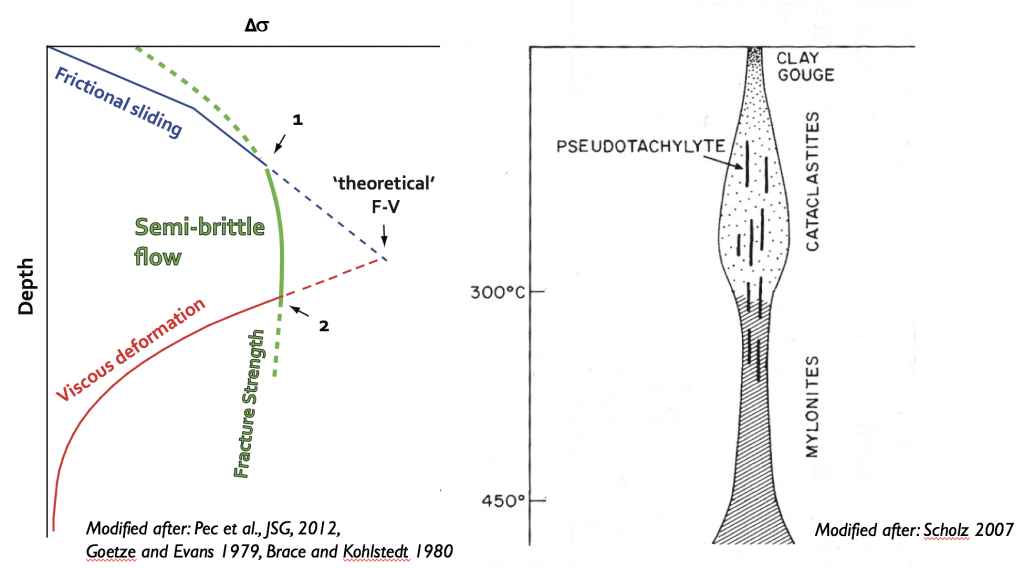Fault zones limit the strength of the lithosphere and operate under a broad range of pressure and temperature conditions. Within a single fault zone, strain localization and partitioning occurs at different depths to accommodate the imposed plate tectonic movement. Depending on the pressure, temperature and strain rate conditions, the rocks will either flow viscously or dilate, fracture, and slide frictionally. Depending on how much strain is accommodated by the viscous component (diffusive mass transfer processes, dislocation motion and grain boundary sliding) and by the frictional component (fracturing, granular flow and frictional sliding) the rheological response will be either more viscous or more frictional. The rheological behavior of rocks under purely viscous and purely frictional conditions is relatively well understood. However, this is not the case when both sets of processes interact.

Pec, M., Al Nasser, S. (2021) Formation of Nanocrystalline and Amorphous Materials Causes Parallel Brittle‐viscous Flow of Crustal Rocks:Experiments on Quartz – Feldspar Aggregates Journal of Geophysical Research, doi: 10.1029/2020JB021262
Pec, M., Stünitz, H., Heilbronner, R., Drury, M.R. (2016) Semi-brittle flow of a granitoid fault rocks in experiments Journal of Geophysical Research, doi: 10.1002/2015JB012513
Pec, M., Stünitz, H., Heilbronner, R., (2012)
Semi-brittle deformation of granitoid gouges in shear experiments at elevated pressures and temperatures
Journal of Structural Geology, 38, 200-221
(2012 Journal of Structural Geology Student Paper of the Year)
